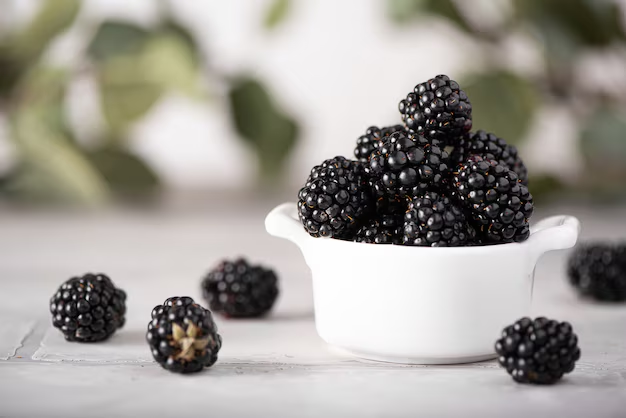Enjoying Blackberries with Diabetes: A Sweet Solution?
Living with diabetes often means keeping a close eye on what you eat, especially when it comes to fruits. Blackberries, those plump, juicy purple gems, are not just a delightful treat; they are nutritionally packed and diabetes-friendly too. But why exactly are blackberries a smart choice for those managing diabetes?
The Nutritional Power of Blackberries
Blackberries are low in sugar, making them an excellent option for diabetics who need to control their glycemic levels. A half-cup serving contains just about 7 grams of sugar. Plus, blackberries are rich in fiber, vitamins, and antioxidants, all crucial components in a healthy diet.
Fiber: With about 4-5 grams of dietary fiber per half-cup serving, blackberries help in slowing down digestion and reducing sugar absorption, notably beneficial for blood sugar management.
Antioxidants: Blackberries are loaded with Vitamin C and Vitamin K, offering protection against inflammation and various chronic diseases, including diabetes-related complications.
Low Glycemic Index: Foods with a low glycemic index (GI) are ideal for diabetics as they have a minimal impact on blood sugar levels. Blackberries score low on the GI scale, preventing rapid spikes in blood glucose.
How to Incorporate Blackberries Into Your Diet
Adding blackberries to your diet can be simple and enjoyable. Here are some ideas:
- Sprinkle them on your breakfast cereal or oatmeal for a sweet and nutritious start to your day.
- Blend them into a smoothie with some spinach and a splash of almond milk for a refreshing drink.
- Mix them into a salad with walnuts and goat cheese for a gourmet touch.
- Enjoy them as a natural and satisfying dessert or snack time treat.
Supporting a Healthy Diabetic Lifestyle
While maintaining a balanced diet is crucial, managing diabetes often requires additional support beyond just dietary choices. For many, this includes financial considerations, especially when healthcare costs and educational resources are part of the equation.
Government aid programs, financial assistance options, and educational grants can relieve some of the burdens for those managing chronic conditions. Knowing what resources are available can empower you and provide peace of mind.
Here's a handy list of some financial programs and resources that might help:
💸 Supplemental Nutrition Assistance Program (SNAP): Assists with food purchases for low-income individuals.
🏥 Medicare and Medicaid: Provides health coverage for eligible individuals, offering significant benefits for diabetes management.
💰 Low Income Home Energy Assistance Program (LIHEAP): Helps households pay for energy costs, often an overlooked but important form of financial relief.
📚 Pell Grants: Offers financial aid for educational purposes that can indirectly help with healthcare costs through better career opportunities.
💼 Debt Relief Programs: Various organizations offer programs to help manage and alleviate personal debt, providing financial relief and stability.
While blackberries offer a delicious and nutrient-rich option for diabetics, it's essential to explore and utilize available financial and educational resources to support a well-rounded approach to diabetes management.
